Guest Blog: Q&A with ACO's Rob Bignall
Building Bridges: Sitting Down with Rob Bignall to Talk Bridge Expansion Joints and Bridge Surface Water Management
There are at least 72,000 bridges across the UK and over 3,000 of those are reported to have issues, likely caused by erosion and damaged expansion joints. To look at the challenges of bridge design and surface water management, we sat down with Rob Bignall, Product Manager – Civils & Infrastructure at ACO Water Management to talk about the issues and solutions in more detail.
What is the scale of the problem with damaged road bridges and bridge expansion joints in the UK?
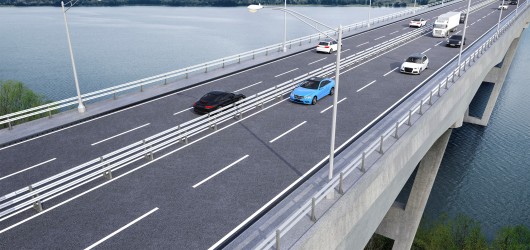
We have quite a big problem with bridges in the UK. In 2023, the RAC Foundation released figures about how a significant proportion of bridges, from ones that span over estuaries through to road bridges at least 1.5m in length, in the UK were now classified as ‘substandard’. Collating data provided by 196 of the 207 councils it asked, the transport and policy research foundation revealed that of the 71,925 bridges managed by those councils, 3,090 were in substandard condition.
That means one in 24 bridges (4.3%) are unable to carry the heaviest vehicles on our roads, including lorries up to 44 tonnes. In the analysis, the RAC Foundation also found that there were 14 partial collapsed bridges.
The cost to fix all the substandard bridges in Britain back to ‘perfect’ condition was estimated to be £918m, while to fix all the maintenance issues across the 71,925 bridges would be some £5.8bn.
Why is there this widespread issue with road bridges?
There are a range of factors that lead to bridges deteriorating into an unacceptable, unsafe condition. This includes natural erosion of stone bridges and bridge deck surfaces, right through to water damage of expensive bridge expansion joint systems. These are all problems caused by the mismanagement of surface water and when bridges don’t have optimal drainage systems in place.
The damage that can be caused by surface water can cause untold delays when having to shut a bridge down to repair the damage, as well as costing a significant sum of money too.
You’ve mentioned bridge expansion joints – what is a bridge expansion joint and why do bridges have expansion joints?
Bridge expansion joints, which can also be known as movement joints, are installed between the section of where the road meets the bridge deck. These joints are what allow concrete to naturally expand and contract without cracking the road surface.
Bridge expansion joints are expensive to produce and install, so they need to be adequately protected, and importantly, rainwater ingress to the joint should not be allowed. If rainwater drains onto the bridge expansion joint, it can quickly damage and shorten the lifespan of this structural component, either through corrosion or thermal expansion.
How can bridge expansion joints be protected from water damage and rainwater ingress?
Typically, on a bridge deck, using a slight camber, surface water will drain to the side of the road and be taken away by combined kerb drainage solutions. Bridge expansion joints should be protected from surface water passing over it as it travels to the drainage channel during a rainfall event.
Highways and infrastructure engineers can protect bridge expansion joints from water ingress and damage by selecting appropriate drainage channels to manage the surface water. These solutions need to be watertight and produced to the BS EN 1433 kitemark standard. Importantly, the drainage solution needs to follow highway engineering guidance and legislation set out by CIRIA and in the Design Manual for Roads & Bridges (DMRB).
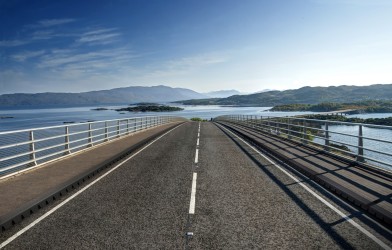
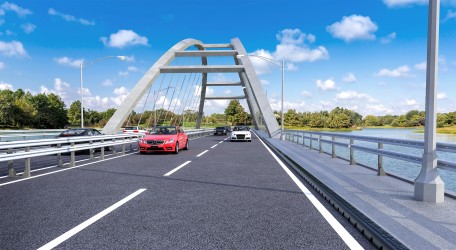
What combined kerb drainage solutions are available from ACO?
In April 2023, ACO launched its KerbDrain BridgeDeck solution, which is a combined kerb and channel drain solution made from ductile iron and is designed for use on all types of bridges.
BridgeDeck can be connected to our full range of standard KerbDrain products to create a complete ACO highway drainage solution. This offers highways engineers a number of benefits, including not needing to figure out how to connect drainage solutions from multiple suppliers together, and having a seamless transition from the highway to the bridge deck, and back to the highway again.
With simple and cost-effective Type I installation, BridgeDeck offers effective and comprehensive drainage without being dependent on surrounding material to meet a D400 classification load.
What sizes and variations does ACO’s BridgeDeck solution come in?
ACO KerbDrain BridgeDeck comes in two different profiles – half batter and splay, denoted by the acronyms HB and SP respectively – to match our current KerbDrain offering. There are four different sized units within each profile, as well as access units and multifunctional endcaps. We also have outlet connectors to two different diameters of pipe.
The biggest benefit of our system is our Expansion Joint solutions. These are kits which allow water to traverse from the bridge to the fixed road drainage system without leaking onto the expensive bridge expansion joint underneath it. Our solutions are dedicated, watertight solutions that we believe are completely unique, and they hold the BS EN 1433 kitemark as well as the CE mark and UKCA marking.
Supply chain issues have been a big problem in the construction sector – how is ACO tackling this challenge with BridgeDeck?
In 2023, we expanded our warehouse and yard at our Shefford HQ so that we could hold more stock and be more resilient to supply chain issues, as well as better serve our customers with quicker lead times.
While many other combined kerb and drainage solutions for bridge decks from other suppliers have to be made to order with long lead times, we offer short lead times across our standard KerbDrain BridgeDeck range, helping contractors to avoid delays.
Alongside holding the units for upcoming jobs, it also means we can react quickly to bridges that need urgent attention or repair.
We can also manufacture bespoke units of KerbDrain BridgeDeck in made-to-order sizes at request, which are subject to longer lead times.
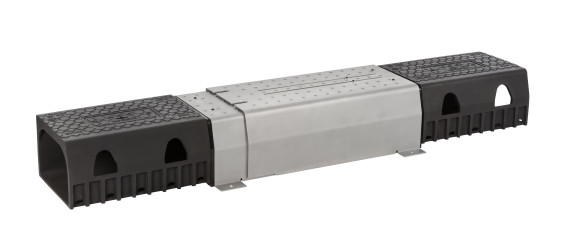
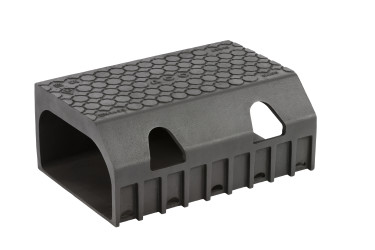
What successes have you seen with BridgeDeck since its launch?
Since the launch of BridgeDeck, we have had it specified on two major highways projects. Both projects were in the southeast, with the first being for a road bridge on the M20 motorway which was spanning a junction in a valley at approximately 160m in length, which required a bridge refurbishment. The other was for a bridge in Kent on the M2 motorway that needed an urgent, 72-hour turnaround in September 2023, showing why having stock readily available is crucial for such instances.
The reason why the tight turnaround was needed was because of the location of the bridge on a major highway. The bridge had to be closed, all civil engineering repairs done, BridgeDeck products installed, and then re-opened again a mere three days later, to keep delays to an absolute minimum. We were able achieve this by having our product on the ground at Shefford and being able to supply promptly to site.
Besides these major projects, we have also been specified and supplied to one of the many HS2 sites and bridges that are part of the high-speed rail project.
Since the launch, we have taken the BridgeDeck to various targeted highways and bridge exhibitions, such as NCE Bridges, Highways UK, and the Road Expo & Bridges Scotland show in Glasgow. The positive feedback we’ve had so far, particularly for our expansion joint solutions which are often a real pain point for engineers, designers and contractors, has shown we were right to pursue this path with BridgeDeck.
Where can highways engineers use BridgeDeck?
Highways engineers can use the BridgeDeck range for a number of different applications, including bridges, flyovers, and viaducts. Whether the bridge is completely new, an existing bridge which requires surface water management and drainage, or even a listed bridge such as those in London across the River Thames, our BridgeDeck system offers a solution for every scenario.
How should surface water on bridges be managed?
Surface water, as on any highway, should be removed from the road or bridge as quickly as possible. This is to prevent flood risks and standing water on the road surface that could present a danger to road users. In the case of a bridge, it may cause erosion of the bridge itself, water expansion through freezing leading to the deck of a bridge cracking, or water ingress into a bridge expansion joint which could lead to freezing and eventual damage to the mechanical joint.
For highways engineers planning bridge deck drainage, ACO provides a comprehensive drainage layout design service using our QuAD Hydraulic software, which will allow us to measure and correctly size a channel system. Whether it’s at the early stages with design engineers or consultants, or for contractors needing a fast turnaround on a live job, we can help achieve a cost-effective solution for the project.
As an added benefit, with ACO UK carrying stock of our system within our UK operation, we can provide a surface water drainage solution in a timely manner which does not require a long lead time for made-to-order products.
To find out more about ACO’s KerbDrain BridgeDeck solution, please visit your local Keyline branch here.
